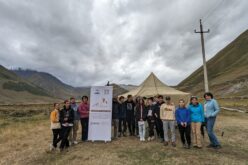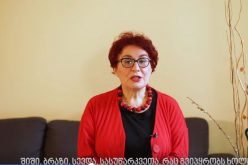With the support of EWMI ACCESS, the Board of Independent Education Consultants (CIEC) in partnership with the Medial Center Pineo, Autism Research and Support Center, and the Autism Association of Georgia developed an inclusive model for delivering optimal and equitable medical services to people with autism spectrum disorder (ASD) during the COVID-19 pandemic.
COVID-19 testing, quarantine, and hospitalization are especially difficult for people with Autism who suffer from high levels of anxiety, communication problems, increased sensory sensitivity, difficulties adapting to new environments, and other disorders. Up until now, Georgia’s COVID-19 healthcare guidelines and practices were not tailored to the special needs of people with ASD. Almost two years into the pandemic, the Medical Center Pineo has become the first medical center to integrate the inclusive model into its services.
The inclusive model is based on comprehensive research carried out by CIEC and its partner organizations with support from EWMI ACCESS to identify, analyze, and address healthcare barriers for people with autism, as well as their parents and the medical personnel face while getting/delivering medical aid during the pandemic.. CIEC surveyed people with autism, their families, psychologists, and healthcare workers from four regions of Georgia and scrutinized the national policies and protocols regarding the provision of the out-patient and in-patient treatment for COVID-19-positive patients. Pineo allocated a multidisciplinary team of its leadership and high-profile healthcare specialists who assisted CIEC in the research process and outreach to medical associations.
Although initially designed to address additional treatment challenges caused by the pandemic, the presented model improves access to and quality of the medical services for people with Autism in general. The document elaborates on roles, functions and techniques while treating people with autism at the primary, secondary tertiary medical treatment levels.
The document is in line with national standards and protocol on detecting and treating autism spectrum disorders and can be used by all interested parties.














